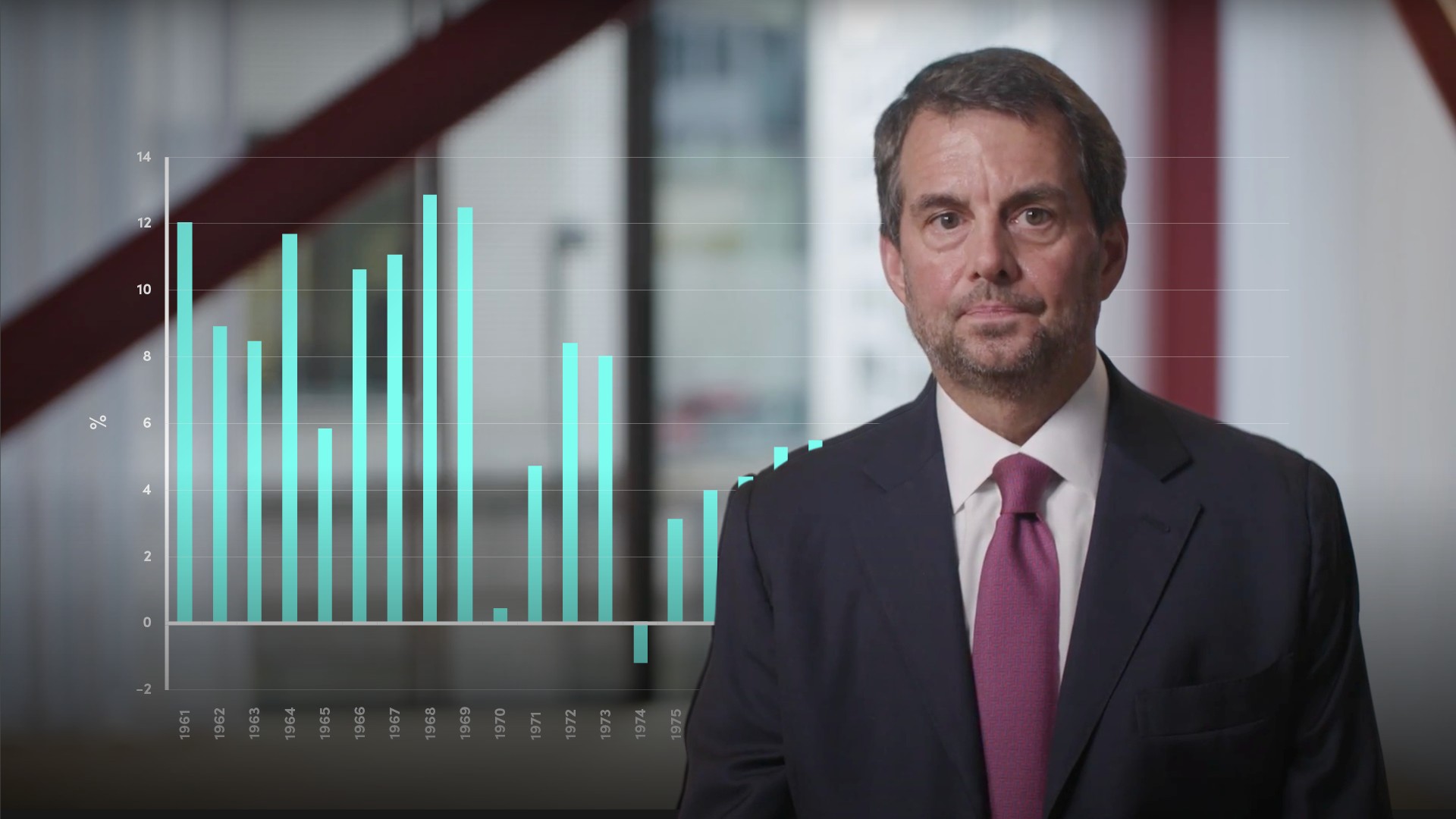
Quantitative Easing in Japan

Tim Hall
30 years: Debt capital markets
Japan became one of the world's largest, strongest and fastest growing economies in the decades after World War II, but this took a turn in the second half of the 1980s. Tim discusses this period as a valuable case study of what central banks should not do to battle severe economic distress.
Japan became one of the world's largest, strongest and fastest growing economies in the decades after World War II, but this took a turn in the second half of the 1980s. Tim discusses this period as a valuable case study of what central banks should not do to battle severe economic distress.

Quantitative Easing in Japan
16 mins 44 secs
Key learning objectives:
Identify the atmosphere and environment leading up to the first round of QE
Discuss the effectiveness of QE1, QE2, and QQE
Explain why Japanese QE has been ineffective
Overview:
The mis-timed rate decisions of the BoJ dating back to the 1980s and the failure to authoritatively and quickly address eroding confidence in banks has been the prevailing reason for its slow and timid growth. The main takeaway is that policy tools should be coordinated and comprehensive to keep an economy from spiralling downwards.
What have been the causes of Japanese growth?
- Accommodative monetary and fiscal policy
- General government support
- Rather lax corporate governance
Real GDP increased from $2.33 trillion in 1980 to $3.67 trillion in 1990, an average growth rate of 4.7% per annum over this 10-year period. The Bank of Japan had cut its overnight bank deposit rate from a high of 9% in March 1980 to 2% by February 1987, where the rate remained until May 1989.
When did these accommodative policies turn negative?
- By the second half of the 1980s, the policy tools had stoked rampant speculation and led to general investor overconfidence, which, along with overly generous credit from banks, created numerous asset bubbles
- In recognition of these risks, the BoJ shifted to a more restrictive approach in May 1989. In an attempt to deflate the asset bubbles, the bank had made a series of five discount rate increases until the official discount rate reached 6% in August 1990
- However, this shift was “too much, too fast and too late”. The NIKKEI fell 39% in one year
- Starting late in 1990, the BoJ reversed course and attempted to spur economic activity. However, the Japanese economy’s annual growth rate slowed dramatically, before stalling completely in 1996
What was the impact of the abrupt shift to tighter monetary policy during 1989-90?
- Sparked growing stress in the Japanese banking system as bad loans soared
- Bank failures - first smaller banks and then larger ones. This occurred more frequently as the decade wore on
- Banks hoarded incremental liquidity in the form of deposits and reserves rather than lending to the real economy as they were more focused on survival than on lending
- Economic growth had continued to slow throughout most of the 1990s, and the economy actually contracted in 1998-99.
- Inflation gradually slowed and bounced around 0% on average in the second half of the decade. Inflation was negative for six straight years starting in 1999
What did the first round of QE consist of, and was it successful?
Focus:- The first round of QE (QE1) started in 2001 and continued until 2006
- Purchasing Japanese government bonds (JGBs)
- Short-term financing bills or promissory notes known as tegata
- The 37 trillion of purchases during this period were principally made from banks rather than non-banks
- Purchasing assets from banks proved ineffective as it did not spur bank lending, in fact, bank lending shrunk during this period
- Fast unwinding of QE could have easily jeopardised the fragile recovery
- QE1 was too focused on shorter-term instruments and banks were not keen to lend
What was the focus of QE2, and was it effective?
Focus:- The second round of QE (QE2) took place between 2010 and 2013
- Response to the return of negative growth and deflation related to the after-effects of the Great Recession
- The 43 trillion programme included a broader array of asset classes, including Tokyo-listed ETFs, REITs, corporate bonds and commercial paper, along with JGBs
- The BoJ effectively reduced its holdings of other non-QE qualified assets
- This neutralised any increase in liquidity
What was the focus of the third round of QE (QQE)?
- In April 2013, Japan ushered in a new and more aggressive form of QE, ‘Qualitative and Quantitative Easing’ (QQE)
- Abenomics focused on stimulating growth and achieving an inflation rate of 2% per annum within two years
- In January 2016, the BoJ amended its QQE approach by adding yield curve control, with the announced intention of reducing the 10-year yield on the JGB to 0%
- This round of QE included different asset classes and was for up to 85 trillion per annum
Why hasn’t Japanese QE been effective?
- It has been too focused on adding liquidity to banks, rather than non-banks, and banks have generally been unable - or unwilling - to use this liquidity to make more loans to the real economy to stimulate spending and investment
- The early rounds of QE were too focused on short-term instruments rather than longer term JGBs, leading to no net new liquidity in the banking system
- Even very aggressive unconventional monetary policy does little to help an economy once deflationary expectations have set in
- Monetary stimulus will be of little help unless it is accompanied by aggressive fiscal stimulus and government-mandated reform to address non-performing loans of banks

Tim Hall
There are no available Videos from "Tim Hall"

